Are you ready to elevate your off-road experience with a lift kit for your 4×4 truck? Choosing the right lift kit is crucial for the performance, safety, and appearance of your vehicle. With so many options available, it can be overwhelming to make the best decision. In this ultimate guide, we’ll walk you through the important factors to consider when selecting a lift kit, including suspension components, tire size, and off-road use. Whether you’re a seasoned off-roader or new to the game, this guide will help you make an informed choice for your 4×4 truck. If you’re looking for a beginner’s guide to buying lift kits online, be sure to check out Beginners Guide to Buying Lift Kits Online for more information.
Key Takeaways:
- Evaluate your needs: Consider the type of off-road terrain you’ll be driving on and the level of lift you need for your truck.
- Understand suspension types: Learn about the various suspension systems available, such as body lifts, leveling kits, and suspension lifts, to make an informed decision.
- Research reputable brands: Take the time to research and compare different lift kit brands to ensure you’re getting a quality product for your 4×4 truck.
- Work within your budget: Determine how much you’re willing to spend on a lift kit and factor in additional costs like installation and maintenance.
- Consider the impact on drivability: Understand how a lift kit will affect your truck’s performance, handling, and overall driving experience before making a decision.
- Think long-term: Consider the long-term effects of a lift kit on your truck’s suspension, tires, and overall maintenance to make sure it aligns with your future plans for your 4×4.
- Consult with professionals: Seek advice from experienced off-road enthusiasts, mechanics, or professionals at 4×4 shops to get valuable insights and recommendations for your lift kit decision.
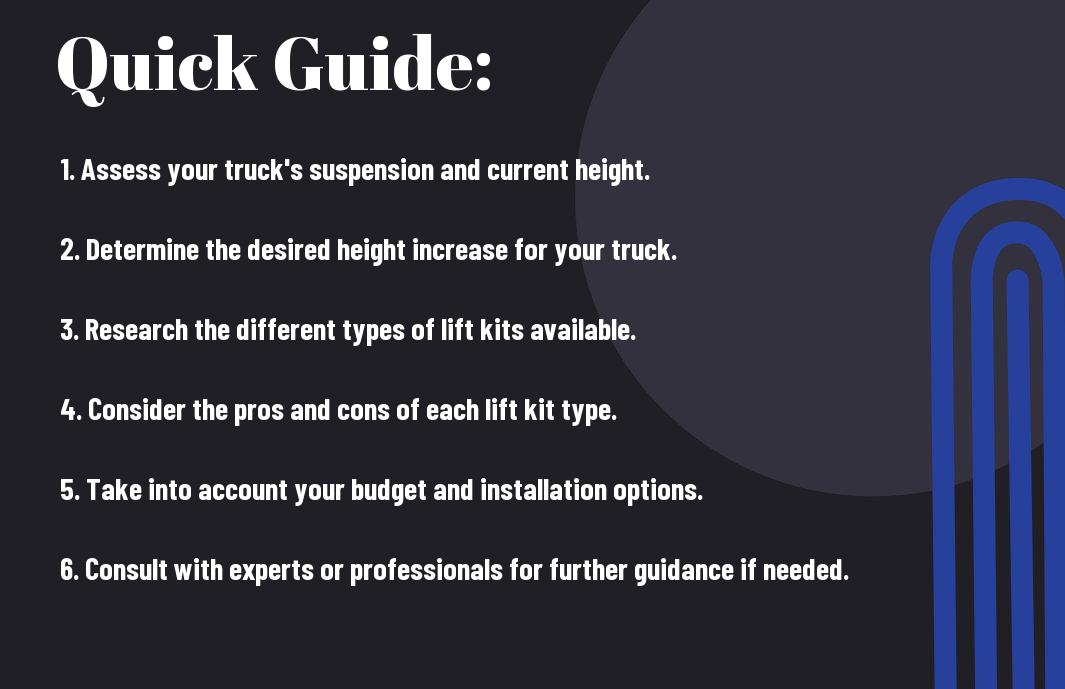
Types of Lift Kits
While choosing the right lift kit for your 4×4 truck, it’s important to understand the various types available in the market. Here are the main types of lift kits you can consider:
- Body lift kits
- Suspension lift kits
- Leveling kits and spacers
- Coilovers and air suspension systems
Recognizing the differences between these types of lift kits will help you make an informed decision about which one is best for your specific needs and preferences.
Body Lift Kits
With body lift kits, the truck’s body is elevated from the frame using spacers or blocks. This type of lift kit is cost-effective and allows for larger tires, but it doesn’t provide any improvement in off-road performance or ground clearance.
Suspension Lift Kits
Kits that provide a suspension lift are designed to raise the entire truck by altering the suspension components. Suspension lift kits come in various designs such as leaf spring, coil spring, and torsion bar suspension kits, and they offer improved ground clearance and off-road performance.
A suspension lift kit is a popular choice for 4×4 truck owners looking to enhance the off-road capabilities of their vehicles, as it allows for larger tires and better performance in rugged terrain.
Leveling Kits and Spacers
Kits designed for leveling and spacers are intended to raise the front of the truck to be level with the rear. This type of lift kit is ideal for improving the appearance of the truck and accommodating larger tires, but it does not provide a significant increase in ground clearance.
Plus, leveling kits and spacers are less complex and costly to install compared to other types of lift kits, making them an appealing option for 4×4 truck owners seeking a minor lift.
Coilovers and Air Suspension Systems
Coilovers are an advanced type of suspension system that combines the coil spring and shock absorber into a single unit, offering enhanced adjustability and performance. Air suspension systems, on the other hand, use air springs to provide a smooth and customizable ride, with the ability to adjust the ride height based on the driving conditions.
Suspension systems like coilovers and air suspension are ideal for 4×4 truck owners looking for superior ride quality and on-the-fly adjustability, although they typically come with a higher price tag compared to other lift kit options.
Factors to Consider When Choosing a Lift Kit
Unlike purchasing new tires or adding a bull bar, choosing the right lift kit for your 4×4 truck is not a decision that should be taken lightly. There are several factors that you should consider before making a purchase, as the wrong choice can lead to serious safety hazards and expensive repairs. Here are some crucial factors to keep in mind:
- Vehicle make and model compatibility
- Intended use: off-road vs. street driving
- Legal and safety implications
- Budget and long-term maintenance
Assume that taking the time to consider these factors will lead to a more informed decision and ensure that you choose the most suitable lift kit for your 4×4 truck.
Vehicle Make and Model Compatibility
Lift kits are not one-size-fits-all. Choosing the right lift kit for your 4×4 truck depends on the make and model of your vehicle. Not all lift kits are compatible with all trucks, and some may require modifications to fit properly. It is imperative to research and confirm that the lift kit you are considering is designed for your specific truck before making a purchase.
Intended Use: Off-road vs. Street Driving
Lift kits serve different purposes based on the intended use of your 4×4 truck. If your primary use is off-road driving, you will need a lift kit that provides ample ground clearance and suspension travel. On the other hand, if you primarily drive on the street, a moderate lift that maintains on-road handling and comfort may be more suitable for your needs. Any decision should be based on your driving habits and where you plan to take your truck.
Legal and Safety Implications
Driving with an improper lift kit can result in legal and safety implications. It’s crucial to ensure that the lift kit you choose complies with local laws and safety regulations. Failure to do so may result in fines, failed inspections, and even accidents due to compromised vehicle stability and handling. Safety and compliance should always be top priorities when choosing a lift kit for your 4×4 truck.
Budget and Long-Term Maintenance
With the wide range of lift kits available, considering your budget and long-term maintenance costs is vital. High-quality lift kits may come with a higher initial cost but can save you money in the long run through durability and reduced maintenance needs. The upfront investment in a reliable lift kit can pay off in terms of performance and longevity.
The decision to invest in a lift kit should not be taken lightly and must be well-researched. Proactively considering factors such as compatibility, intended use, legal implications, and budget will help you make the right choice for your 4×4 truck.
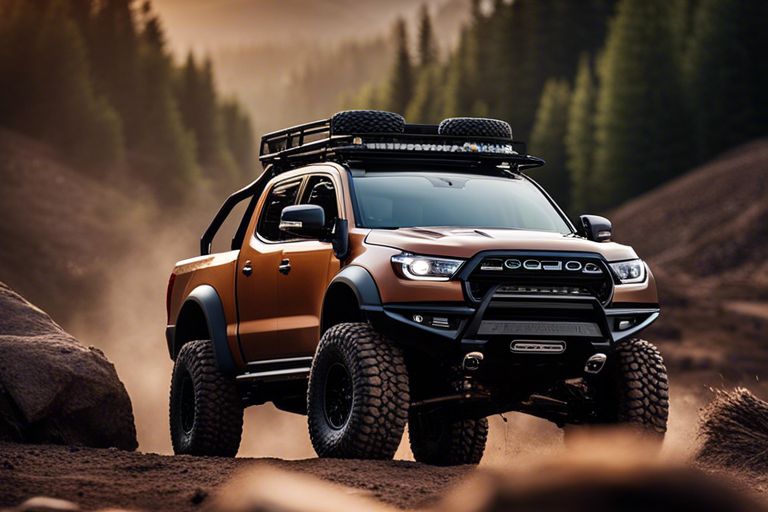
Step-by-Step Guide to Selecting Your Lift Kit
To ensure you choose the right lift kit for your 4×4 truck, it’s important to follow a step-by-step process. This will help you make an informed decision based on your vehicle’s current setup, performance goals, and thorough research and comparison of available lift kits.
Assess Your Vehicle’s Current Setup
The first step in selecting a lift kit for your 4×4 truck is to assess its current setup. This includes examining the existing suspension, tires, and any modifications that have been made. It’s crucial to take accurate measurements and note any limitations or compatibility issues. This will help you determine the appropriate lift height and type for your specific vehicle.
Define Your Performance Goals
Define what you expect from your 4×4 truck after installing a lift kit. Whether it’s off-road capability, increased ground clearance, or improved towing capacity, clearly outlining your performance goals will guide your lift kit selection. Consider factors such as load capacity, ride quality, and maneuverability to ensure the lift kit aligns with your driving needs.
Performance goals: off-road capability, increased ground clearance, improved towing capacity, load capacity, ride quality, maneuverability
Research and Compare Lift Kits
When researching lift kits, consider factors such as lift height, material quality, compatibility with your vehicle, and included components. Comparing various lift kits will help you determine which one best meets your specific requirements and budget. Utilize online reviews, forums, and manufacturer specifications to gain comprehensive insights into the available options.
Lift kits comparison:
| Factors to Consider | Available Options |
| Lift Height | |
| Material Quality | |
| Compatibility | |
| Included Components |
Seek Expert Advice and Read Reviews
Step-by-step, seek advice from experienced off-road enthusiasts, mechanics, or professionals who can provide valuable insights based on their expertise. Reading reviews from other 4×4 truck owners who have installed the same lift kit can offer real-world feedback on performance, durability, and any potential issues. This additional information will further inform your decision-making process.
This expert advice and reviews will help in finalizing your lift kit selection, ensuring you make a confident and well-informed choice for your 4×4 truck.
Installation Tips and Best Practices
Now that you have chosen the lift kit for your 4×4 truck, it’s time to focus on the installation process. Proper installation is crucial for the safety and performance of your vehicle, so it’s important to follow best practices. Here are some tips to help you navigate the installation process smoothly:
- Any installation process should start with a thorough inspection of the vehicle to ensure that all components are in good working condition.
- Properly measure the vehicle’s current ride height before beginning the installation to have a baseline for comparison.
- Prepare the necessary tools and equipment for the installation, including jacks, jack stands, wrenches, and lubricants.
This will ensure that the installation process is carried out smoothly and efficiently. For more detailed information on installation tips, you can also check out A Brief Guide to Choosing a Lift Kit for Your 4×4.
Preparing for the Installation Process
Any successful lift kit installation starts with thorough preparation. Before getting started, it’s essential to thoroughly clean the work area and gather all the necessary tools and equipment. Additionally, it’s important to carefully read the manufacturer’s instructions and have a clear understanding of the installation process.
Tools and Equipment Needed
For a successful installation, you will need a variety of tools and equipment, including jacks, jack stands, wrenches, lubricants, and possibly specialized tools depending on the specific lift kit you have chosen. It’s important to have the right tools and equipment to ensure that the installation is carried out safely and effectively.
This will ensure that the installation process is carried out smoothly and efficiently. For more detailed information on installation tips, you can also check out A Brief Guide to Choosing a Lift Kit for Your 4×4.
Professional vs. DIY Installation
An important decision to make when installing a lift kit is whether to attempt the installation yourself or seek professional assistance. While a DIY installation can be a rewarding experience for enthusiasts, a professional installation can ensure that the job is done safely and effectively, with the guarantee of expertise and experience.
Needed care and consideration are required before undertaking a DIY installation, as it can present challenges and safety risks. It’s important to weigh the pros and cons of each option carefully before making a decision.
Can Using Roof Racks and Cargo Carriers Affect the Selection of a Lift Kit for a 4×4 Truck?
When considering a lift kit for a 4×4 truck, it’s important to factor in the use of roof racks and cargo carriers to maximize storage space with roof racks. The added weight and height from these accessories can impact the selection of a lift kit, requiring adjustments for clearance and weight distribution.
Which Lift Kit Brands are the Best for Improving Suspension and Handling in a 4×4 Truck?
Lifting your off-road rig to new heights, the best lift kit brands exemplify robust design and superior functionality, ensuring you take on treacherous terrain with aplomb. For enthusiasts intent on enhancing their rides, choosing topquality 4×4 truck upgrades is pivotal for improved suspension and handling that conquers the untamed.
Pros and Cons of Different Lift Kit Options
Not all lift kits are created equal, and it’s important to consider the various pros and cons before making a decision. Here’s a breakdown of the different lift kit options available:
| Option | Pros and Cons |
| Spacer Lift Kit | Can be inexpensive and easy to install, but may compromise ride quality and suspension performance. |
| Body Lift Kit | Provides additional tire clearance without affecting suspension, but may not enhance off-road performance. |
| Suspension Lift Kit | Significantly improves off-road capability and ground clearance, but can be expensive and may require professional installation. |
Performance Enhancements
Options for performance enhancements through lift kits include increased ground clearance, allowing for larger tires, and improved approach and departure angles. These upgrades can significantly enhance the off-road capabilities of your 4×4 truck, allowing it to tackle more challenging terrain with ease.
Aesthetics and Ride Quality
Pros of lift kits for aesthetics and ride quality are the improved stance and ability to customize the look of your truck. Additionally, some lift kits can provide a smoother ride over rough terrain, enhancing overall comfort during off-road adventures.
Any decision regarding aesthetics and ride quality should also take into account the potential drawbacks and compromises associated with certain lift kit options, such as decreased fuel efficiency and a higher center of gravity.
Potential Drawbacks and Compromises
Drawbacks and compromises associated with lift kits include the potential for decreased fuel efficiency, increased wear on suspension components, and a higher center of gravity, which can affect stability during cornering and emergency maneuvers.
Quality installation and regular maintenance can help mitigate these potential drawbacks, ensuring the performance and safety of your 4×4 truck.
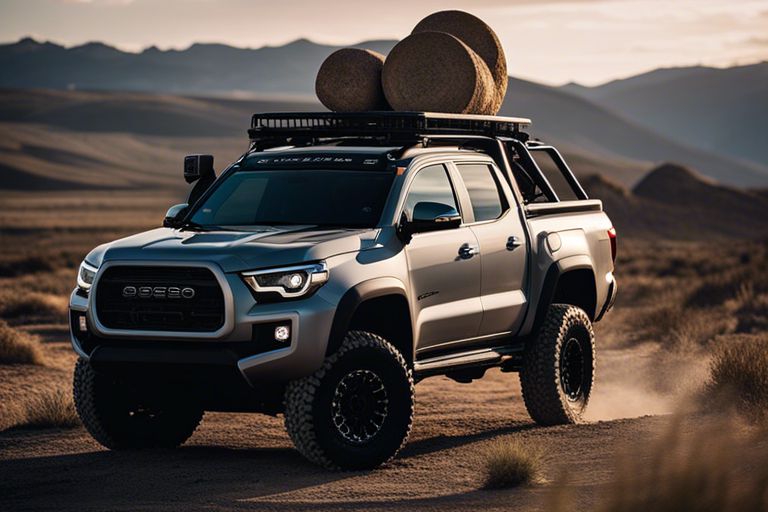
Conclusion: The Ultimate Guide To Choosing The Right Lift Kit For Your 4×4 Truck
Following this comprehensive guide, you are now equipped with the knowledge and understanding needed to make an informed decision when selecting a lift kit for your 4×4 truck. By considering factors such as your intended use, the type of terrain you will be tackling, and your budget, you can confidently choose the right lift kit that will enhance the performance and capability of your vehicle. Remember to also take into account the importance of professional installation and regular maintenance to ensure the longevity and safety of your lifted 4×4 truck. With the right lift kit, you can elevate your off-road experiences to new heights.
FAQ
Q: What is a lift kit for a 4×4 truck?
A: A lift kit is a modified suspension system that raises the ride height of a vehicle, making it capable of accommodating larger tires and providing better off-road performance.
Q: Why should I consider installing a lift kit on my 4×4 truck?
A: Installing a lift kit on your 4×4 truck can provide increased ground clearance, improved off-road capability, and a more aggressive appearance.
Q: What factors should I consider when choosing the right lift kit for my 4×4 truck?
A: Some key factors to consider include the type of driving you will be doing (off-road or on-road), the intended use of your truck (work or recreational), and the size of tires you want to install.
Q: What are the different types of lift kits available for 4×4 trucks?
A: Lift kits come in various types, including suspension lift kits, body lift kits, and leveling kits. Each type offers different benefits and drawbacks, so it’s important to choose the one that best suits your needs.
Q: How do I know what size lift kit is right for my 4×4 truck?
A: The size of the lift kit you choose will depend on your specific needs and preferences. It’s important to consider factors such as tire size, suspension travel, and overall ride quality before making a decision.
Q: Are there any downsides to installing a lift kit on my 4×4 truck?
A: While lift kits offer many benefits, they can also impact the vehicle’s handling, fuel economy, and overall ride comfort. It’s important to consider these potential drawbacks before making a decision.
Q: How can I ensure that the lift kit installation is done correctly?
A: It is essential to have the lift kit installed by a professional or a certified mechanic who has experience with 4×4 trucks. This will ensure that the installation is done correctly and safely, minimizing the risk of any issues down the road.</pRecognizing the differences between these types of off-road experience with a lift kit for your 4×4 truck? Choosing the right lift kit is crucial for the performance, safety, and appearance of your vehicle. With so many options available, it can be overwhelming to make the best decision. In this ultimate guide, we’ll walk you through the important factors to consider when selecting a lift kit, including suspension components, tire size, and off-road use. Whether you’re a seasoned off-roader or new to the game, this guide will help you make an informed choice for your 4×4 truck. If you’re looking for a beginner’s guide to buying lift kits online, be sure to check out Beginners Guide to Buying Lift Kits Online for more information.
Key Takeaways:
- Evaluate your needs: Consider the type of off-road terrain you’ll be driving on and the level of lift you need for your truck.
- Understand suspension types: Learn about the various suspension systems available, such as body lifts, leveling kits, and suspension lifts, to make an informed decision.
- Research reputable brands: Take the time to research and compare different lift kit brands to ensure you’re getting a quality product for your 4×4 truck.
- Work within your budget: Determine how much you’re willing to spend on a lift kit and factor in additional costs like installation and maintenance.
- Consider the impact on drivability: Understand how a lift kit will affect your truck’s performance, handling, and overall driving experience before making a decision.
- Think long-term: Consider the long-term effects of a lift kit on your truck’s suspension, tires, and overall maintenance to make sure it aligns with your future plans for your 4×4.
- Consult with professionals: Seek advice from experienced off-road enthusiasts, mechanics, or professionals at 4×4 shops to get valuable insights and recommendations for your lift kit decision.

Types of Lift Kits
While choosing the right lift kit for your 4×4 truck, it’s important to understand the various types available in the market. Here are the main types of lift kits you can consider:
- Body lift kits
- Suspension lift kits
- Leveling kits and spacers
- Coilovers and air suspension systems
Recognizing the differences between these types of lift kits will help you make an informed decision about which one is best for your specific needs and preferences.
Body Lift Kits
With body lift kits, the truck’s body is elevated from the frame using spacers or blocks. This type of lift kit is cost-effective and allows for larger tires, but it doesn’t provide any improvement in off-road performance or ground clearance.
Suspension Lift Kits
Kits that provide a suspension lift are designed to raise the entire truck by altering the suspension components. Suspension lift kits come in various designs such as leaf spring, coil spring, and torsion bar suspension kits, and they offer improved ground clearance and off-road performance.
A suspension lift kit is a popular choice for 4×4 truck owners looking to enhance the off-road capabilities of their vehicles, as it allows for larger tires and better performance in rugged terrain.
Leveling Kits and Spacers
Kits designed for leveling and spacers are intended to raise the front of the truck to be level with the rear. This type of lift kit is ideal for improving the appearance of the truck and accommodating larger tires, but it does not provide a significant increase in ground clearance.
Plus, leveling kits and spacers are less complex and costly to install compared to other types of lift kits, making them an appealing option for 4×4 truck owners seeking a minor lift.
Coilovers and Air Suspension Systems
Coilovers are an advanced type of suspension system that combines the coil spring and shock absorber into a single unit, offering enhanced adjustability and performance. Air suspension systems, on the other hand, use air springs to provide a smooth and customizable ride, with the ability to adjust the ride height based on the driving conditions.
Suspension systems like coilovers and air suspension are ideal for 4×4 truck owners looking for superior ride quality and on-the-fly adjustability, although they typically come with a higher price tag compared to other lift kit options.
Factors to Consider When Choosing a Lift Kit
Unlike purchasing new tires or adding a bull bar, choosing the right lift kit for your 4×4 truck is not a decision that should be taken lightly. There are several factors that you should consider before making a purchase, as the wrong choice can lead to serious safety hazards and expensive repairs. Here are some crucial factors to keep in mind:
- Vehicle make and model compatibility
- Intended use: off-road vs. street driving
- Legal and safety implications
- Budget and long-term maintenance
Assume that taking the time to consider these factors will lead to a more informed decision and ensure that you choose the most suitable lift kit for your 4×4 truck.
Vehicle Make and Model Compatibility
Lift kits are not one-size-fits-all. Choosing the right lift kit for your 4×4 truck depends on the make and model of your vehicle. Not all lift kits are compatible with all trucks, and some may require modifications to fit properly. It is imperative to research and confirm that the lift kit you are considering is designed for your specific truck before making a purchase.
Intended Use: Off-road vs. Street Driving
Lift kits serve different purposes based on the intended use of your 4×4 truck. If your primary use is off-road driving, you will need a lift kit that provides ample ground clearance and suspension travel. On the other hand, if you primarily drive on the street, a moderate lift that maintains on-road handling and comfort may be more suitable for your needs. Any decision should be based on your driving habits and where you plan to take your truck.
Legal and Safety Implications
Driving with an improper lift kit can result in legal and safety implications. It’s crucial to ensure that the lift kit you choose complies with local laws and safety regulations. Failure to do so may result in fines, failed inspections, and even accidents due to compromised vehicle stability and handling. Safety and compliance should always be top priorities when choosing a lift kit for your 4×4 truck.
Budget and Long-Term Maintenance
With the wide range of lift kits available, considering your budget and long-term maintenance costs is vital. High-quality lift kits may come with a higher initial cost but can save you money in the long run through durability and reduced maintenance needs. The upfront investment in a reliable lift kit can pay off in terms of performance and longevity.
The decision to invest in a lift kit should not be taken lightly and must be well-researched. Proactively considering factors such as compatibility, intended use, legal implications, and budget will help you make the right choice for your 4×4 truck.

Step-by-Step Guide to Selecting Your Lift Kit
To ensure you choose the right lift kit for your 4×4 truck, it’s important to follow a step-by-step process. This will help you make an informed decision based on your vehicle’s current setup, performance goals, and thorough research and comparison of available lift kits.
Assess Your Vehicle’s Current Setup
The first step in selecting a lift kit for your 4×4 truck is to assess its current setup. This includes examining the existing suspension, tires, and any modifications that have been made. It’s crucial to take accurate measurements and note any limitations or compatibility issues. This will help you determine the appropriate lift height and type for your specific vehicle.
Define Your Performance Goals
Define what you expect from your 4×4 truck after installing a lift kit. Whether it’s off-road capability, increased ground clearance, or improved towing capacity, clearly outlining your performance goals will guide your lift kit selection. Consider factors such as load capacity, ride quality, and maneuverability to ensure the lift kit aligns with your driving needs.
Performance goals: off-road capability, increased ground clearance, improved towing capacity, load capacity, ride quality, maneuverability
Research and Compare Lift Kits
When researching lift kits, consider factors such as lift height, material quality, compatibility with your vehicle, and included components. Comparing various lift kits will help you determine which one best meets your specific requirements and budget. Utilize online reviews, forums, and manufacturer specifications to gain comprehensive insights into the available options.
Lift kits comparison:
| Factors to Consider | Available Options |
| Lift Height | |
| Material Quality | |
| Compatibility | |
| Included Components |
Seek Expert Advice and Read Reviews
Step-by-step, seek advice from experienced off-road enthusiasts, mechanics, or professionals who can provide valuable insights based on their expertise. Reading reviews from other 4×4 truck owners who have installed the same lift kit can offer real-world feedback on performance, durability, and any potential issues. This additional information will further inform your decision-making process.
This expert advice and reviews will help in finalizing your lift kit selection, ensuring you make a confident and well-informed choice for your 4×4 truck.
Installation Tips and Best Practices
Now that you have chosen the lift kit for your 4×4 truck, it’s time to focus on the installation process. Proper installation is crucial for the safety and performance of your vehicle, so it’s important to follow best practices. Here are some tips to help you navigate the installation process smoothly:
- Any installation process should start with a thorough inspection of the vehicle to ensure that all components are in good working condition.
- Properly measure the vehicle’s current ride height before beginning the installation to have a baseline for comparison.
- Prepare the necessary tools and equipment for the installation, including jacks, jack stands, wrenches, and lubricants.
This will ensure that the installation process is carried out smoothly and efficiently. For more detailed information on installation tips, you can also check out A Brief Guide to Choosing a Lift Kit for Your 4×4.
Preparing for the Installation Process
Any successful lift kit installation starts with thorough preparation. Before getting started, it’s essential to thoroughly clean the work area and gather all the necessary tools and equipment. Additionally, it’s important to carefully read the manufacturer’s instructions and have a clear understanding of the installation process.
Tools and Equipment Needed
For a successful installation, you will need a variety of tools and equipment, including jacks, jack stands, wrenches, lubricants, and possibly specialized tools depending on the specific lift kit you have chosen. It’s important to have the right tools and equipment to ensure that the installation is carried out safely and effectively.
This will ensure that the installation process is carried out smoothly and efficiently. For more detailed information on installation tips, you can also check out A Brief Guide to Choosing a Lift Kit for Your 4×4.
Professional vs. DIY Installation
An important decision to make when installing a lift kit is whether to attempt the installation yourself or seek professional assistance. While a DIY installation can be a rewarding experience for enthusiasts, a professional installation can ensure that the job is done safely and effectively, with the guarantee of expertise and experience.
Needed care and consideration are required before undertaking a DIY installation, as it can present challenges and safety risks. It’s important to weigh the pros and cons of each option carefully before making a decision.
Can Using Roof Racks and Cargo Carriers Affect the Selection of a Lift Kit for a 4×4 Truck?
When considering a lift kit for a 4×4 truck, it’s important to factor in the use of roof racks and cargo carriers to maximize storage space with roof racks. The added weight and height from these accessories can impact the selection of a lift kit, requiring adjustments for clearance and weight distribution.
Pros and Cons of Different Lift Kit Options
Not all lift kits are created equal, and it’s important to consider the various pros and cons before making a decision. Here’s a breakdown of the different lift kit options available:
| Option | Pros and Cons |
| Spacer Lift Kit | Can be inexpensive and easy to install, but may compromise ride quality and suspension performance. |
| Body Lift Kit | Provides additional tire clearance without affecting suspension, but may not enhance off-road performance. |
| Suspension Lift Kit | Significantly improves off-road capability and ground clearance, but can be expensive and may require professional installation. |
Performance Enhancements
Options for performance enhancements through lift kits include increased ground clearance, allowing for larger tires, and improved approach and departure angles. These upgrades can significantly enhance the off-road capabilities of your 4×4 truck, allowing it to tackle more challenging terrain with ease.
Aesthetics and Ride Quality
Pros of lift kits for aesthetics and ride quality are the improved stance and ability to customize the look of your truck. Additionally, some lift kits can provide a smoother ride over rough terrain, enhancing overall comfort during off-road adventures.
Any decision regarding aesthetics and ride quality should also take into account the potential drawbacks and compromises associated with certain lift kit options, such as decreased fuel efficiency and a higher center of gravity.
Potential Drawbacks and Compromises
Drawbacks and compromises associated with lift kits include the potential for decreased fuel efficiency, increased wear on suspension components, and a higher center of gravity, which can affect stability during cornering and emergency maneuvers.
Quality installation and regular maintenance can help mitigate these potential drawbacks, ensuring the performance and safety of your 4×4 truck.

Conclusion: The Ultimate Guide To Choosing The Right Lift Kit For Your 4×4 Truck
Following this comprehensive guide, you are now equipped with the knowledge and understanding needed to make an informed decision when selecting a lift kit for your 4×4 truck. By considering factors such as your intended use, the type of terrain you will be tackling, and your budget, you can confidently choose the right lift kit that will enhance the performance and capability of your vehicle. Remember to also take into account the importance of professional installation and regular maintenance to ensure the longevity and safety of your lifted 4×4 truck. With the right lift kit, you can elevate your off-road experiences to new heights.
FAQ
Q: What is a lift kit for a 4×4 truck?
A: A lift kit is a modified suspension system that raises the ride height of a vehicle, making it capable of accommodating larger tires and providing better off-road performance.
Q: Why should I consider installing a lift kit on my 4×4 truck?
A: Installing a lift kit on your 4×4 truck can provide increased ground clearance, improved off-road capability, and a more aggressive appearance.
Q: What factors should I consider when choosing the right lift kit for my 4×4 truck?
A: Some key factors to consider include the type of driving you will be doing (off-road or on-road), the intended use of your truck (work or recreational), and the size of tires you want to install.
Q: What are the different types of lift kits available for 4×4 trucks?
A: Lift kits come in various types, including suspension lift kits, body lift kits, and leveling kits. Each type offers different benefits and drawbacks, so it’s important to choose the one that best suits your needs.
Q: How do I know what size lift kit is right for my 4×4 truck?
A: The size of the lift kit you choose will depend on your specific needs and preferences. It’s important to consider factors such as tire size, suspension travel, and overall ride quality before making a decision.
Q: Are there any downsides to installing a lift kit on my 4×4 truck?
A: While lift kits offer many benefits, they can also impact the vehicle’s handling, fuel economy, and overall ride comfort. It’s important to consider these potential drawbacks before making a decision.
Q: How can I ensure that the lift kit installation is done correctly?
A: It is essential to have the lift kit installed by a professional or a certified mechanic who has experience with 4×4 trucks. This will ensure that the installation is done correctly and safely, minimizing the risk of any issues down the road.
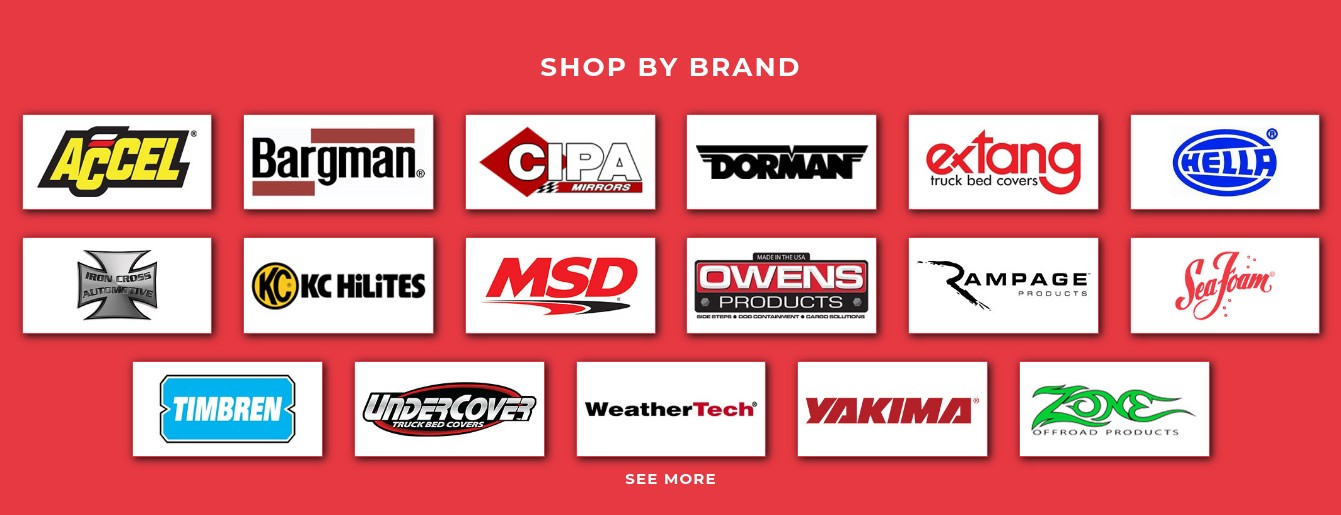


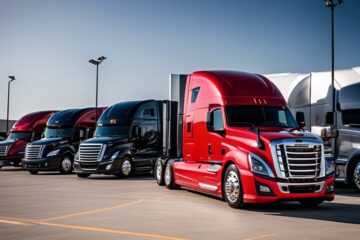
0 Comments